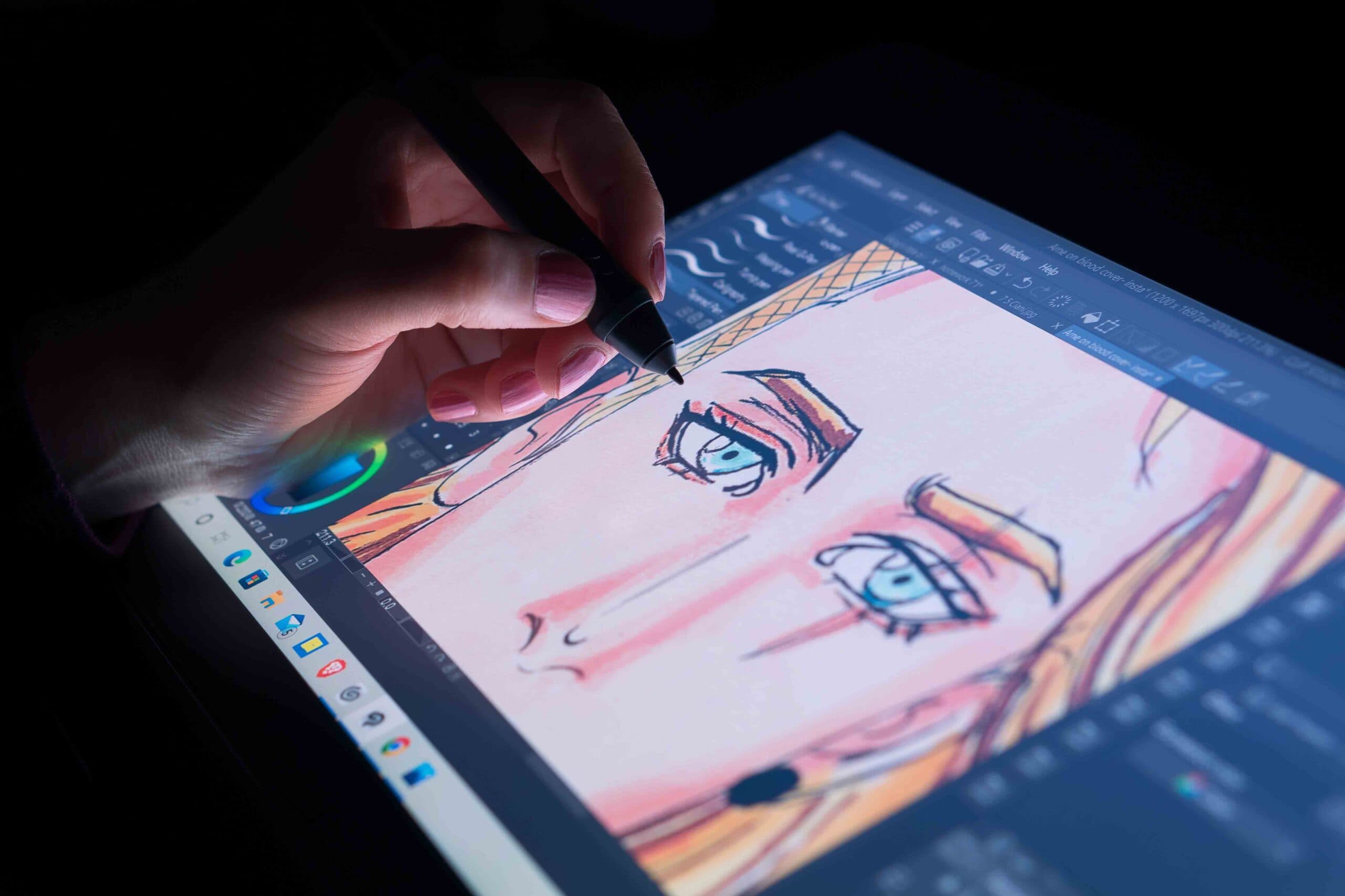Animation is defined as an artistic technique in which an artist creates moving images. Animation is a filmmaking medium involving drawing successive images that create the illusion of movement when filmed in rapid succession. Today, modern animation technology allows animators to create art that is in demand across a wide range of industries, opening up endless possibilities for careers in animation.
Before you can begin pursuing entry-level animation jobs, you will want to develop an animation portfolio and earn a relevant, skills-based degree. Knowing the top animation degree careers can help you personalize your portfolio and pursue relevant animation internships.
Film and Television Animation
Film and television animation made the art of animation mainstream. Animation innovators, like Walt Disney, used this type of art to create engaging and immersive films unlike anything anyone had seen before. Delighting children and adults alike, animation films and television shows continue to be some of the most popular and lucrative entertainment options of the modern era.
As a result, there are many types of film and TV animation jobs available, allowing those who pursue an animation degree online to consider careers in this arena.
Animator Roles in Film and TV
According to ScreenSkills, these are some of the top animator jobs available in film and television:
- Animator — Specializing in either 2D or 3D animation, the animator works to create the images that will be used in the rapid sequence of the film or TV series.
- Layout or Storyboard Artist — This animation job requires an individual to plan out the animation series and to create the storyboard that will be used for the film or TV show.
- Lighting Artist — This entry-level animation position involves using animation software to adjust the lighting of the animated movie or series, giving it a realistic and lifelike effect.
- Background Designer — Rather than creating the movement and action of the main characters, the background designer works to develop and design an animated setting that helps bring the story to life. This is another one of the best entry-level animation jobs.
Career Progression in the Entertainment Industry
There is not always a clear career path for animators who want to work in the entertainment industry. Generally speaking, an individual might pursue an entry-level animation position after completing one or more animation internships. After earning an entry-level position and acquiring additional professional experience in the field, an animator may progress toward higher-level roles, such as animation technical director, art director, character designer, or concept artist. Most animators combine their practical and technical skills with their interest in a niche area of animation to chart a career path that allows them to accomplish their professional and personal goals.
Video Game Development
The video game industry that was once defined by 8-bit pixels has now transformed into an animator’s dream come true, with endless possibilities to create realistic animations, seamless movements, and engaging storylines. Given that users often flock to video games that feature human-like animations and immersive virtual environments, it’s not surprising that there are many motion graphics jobs and video game animator positions available.
The Role of Animators in Game Design
While animation in movies and TV shows is primarily used for entertainment purposes, animation plays a more critical role in video game design and development. Video game animations often specialize in user interface animation, which is a type of animation that blends visual effects with animation drawings to provide users with an interactive experience. User interface animation, or UI animation, allows video game players to navigate through the chapters of the game and enjoy an engaging, interactive experience along the way.
Building a Career in Game Animation
There are several steps you can take to launch a career in video game animation and meet the criteria needed for a video game animator job description:
- Earn an animation degree. Most video game development companies want to hire animators who have a solid foundation of animation skills and technology.
- Pursue animation internships in video game design and development. Gaining professional experience in this niche sector of the industry will help you develop the niche skills needed for this career path.
- Build an animation portfolio. This showcases the work you have done in video game design and user interface animation.
Advertising and Marketing
Having long been associated with the entertainment industry, animation is also one of the most powerful communication tools in advertising, especially in the age of digital marketing. Advertising and marketing managers often want to work with adept animators who can bring their campaigns to life in a way that attracts the attention of their target audience and encourages them to move forward with a purchase.
Animation in Advertising Campaigns
The use of animation within advertising campaigns has risen sharply, particularly since 2011 and 2012, when the use of smartphones became widespread and the social media era began. Today, consumers see advertisements on all of their devices, with animated advertisements being some of the most effective advertisements. It’s expected that animation will continue to play a vital role in the digital marketing campaigns of the future, ensuring that there will continue to be a wide range of motion graphics jobs and animation jobs in marketing available.
Career Opportunities in Advertising
These are some of the top entry-level animation jobs in marketing and advertising:
- Video and Animation Specialist
- 3D Visual Design Expert
- Digital Designer
- Animation Production Coordinator
- Marketing Content Specialist
Educational Media and E-Learning
The rise of educational media has led to an influx of animation jobs in the e-learning industry. From students in K-12 classrooms to graduate students enrolled at the top universities around the world, nearly every type of learner engages in some type of e-learning experience. Educational media programs that rely heavily on expert animation can increase user engagement as well as improve learning outcomes, making animation one of the most powerful components of the e-learning experience.
Animators in Educational Content Development
Animators who choose to work in educational content development will use their advanced animation skills to transform bland educational material into engaging and immersive animations that retain the attention of the target audience. Educational media animators also have to be adaptable because their techniques must accommodate the latest trends in e-learning. Currently, some of the top trends in animated educational content include:
- Micro-animations that gently guide the user through the coursework.
- Kinetic typography that highlights key ideas and important elements of the content.
- Animated infographics that break down complex information into digestible and relatable chunks.
Careers at Educational Technology Companies
As animation in e-learning continues to rise, it’s expected that there will be many different types of animation careers to discover at the leading educational technology companies. There are endless possibilities for an animation career within the educational technology sector.
Animation for Digital and Web Media
Demand for animators is expected to rise in the coming years, per data from the U.S. Bureau of Labor Statistics (BLS). In fact, the average animation degree salary is about $99,000 per year, which is significantly higher than other occupations. There will continue to be a high demand for interactive animation designs for digital and web media, making this one of the most powerful sectors to work in .
Web Animation and User Interface Design
From the moment the Internet came into existence, web animation played a prominent role in the online experience. Today, web animations have changed from the Flash-era graphics that once dominated the browsers of the late 1990s and early 2000s, and have now grown into sophisticated animations that capture the hearts and minds of users .
Web animation and user interface design can be combined to create a narrative journey for the user. The best web animations will work to guide a user through a website and help them discover the most important parts of the page before moving to the next tab.
In addition to improving the user experience, web animations play a critical role in brand development and online visibility. Animators must rely on a precise animation style to create visual and motion graphics that align with the values of the brand and help improve the brand’s connections with its followers.
Finding Your Niche in Digital Media Animation
When you enroll in an animation degree program, you can begin building the transferable skills needed in any animation job. You can also discover niche areas of animation that interest you most. Most animators find their niche by enrolling in unique courses and pursuing animation internships that allow them to develop new, hands-on skills.
Some areas of digital media animation that you might want to consider include social media animation, explainer videos, virtual reality animations, and augmented reality animations.
Learn More About Careers in Animation at Rocky Mountain College of Art + Design
To develop the skills needed for entry-level animation jobs, you will want to pursue an animation degree online that allows you to become proficient in the latest animation technology and familiar with emerging trends in the industry. At Rocky Mountain College of Art + Design, we offer a Bachelor of Fine Arts in Animation as well as an online Bachelor of Fine Arts in Animation, allowing you to develop advanced animation skills while building your portfolio.
Request more information about our degree programs today!

